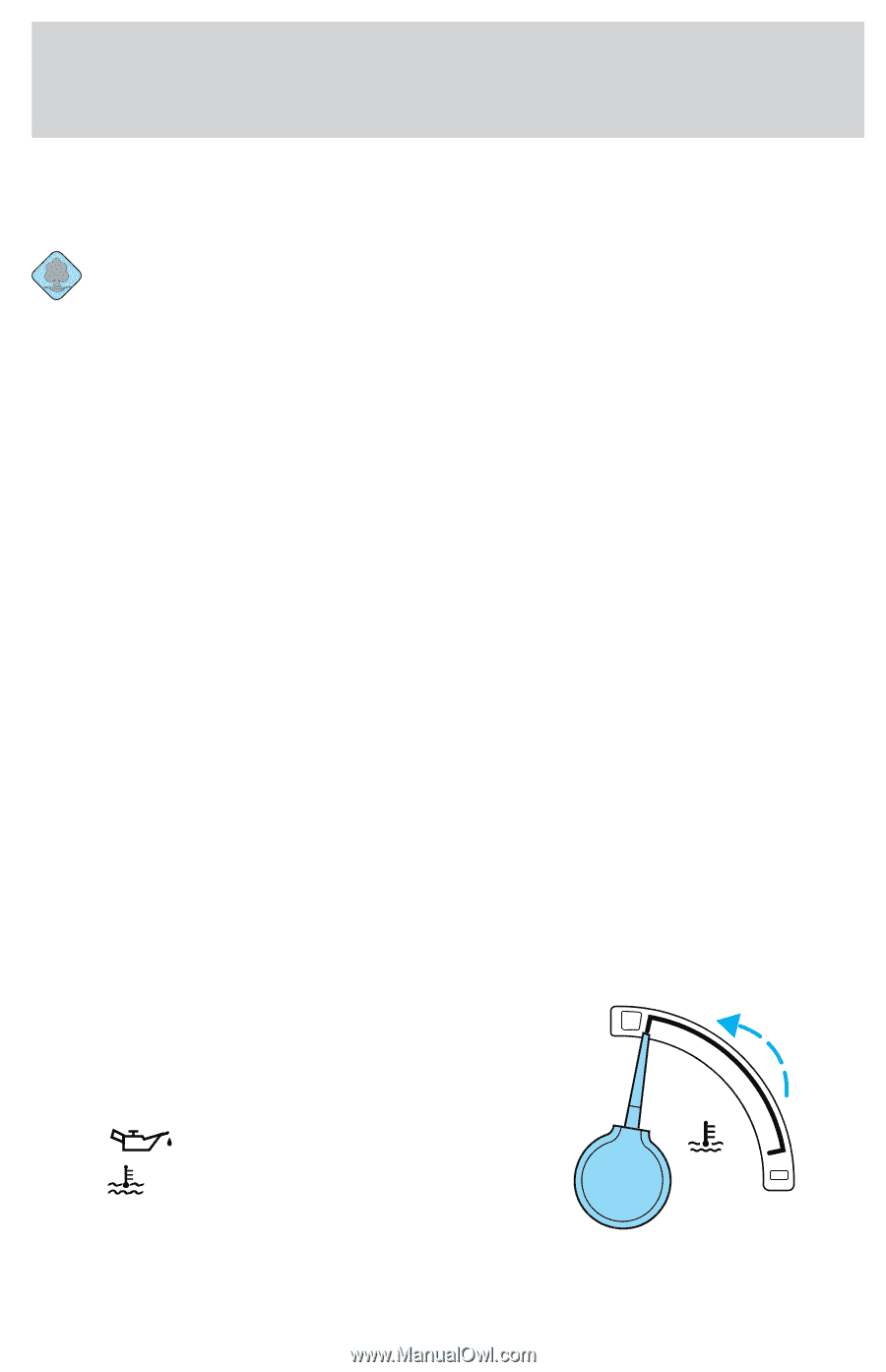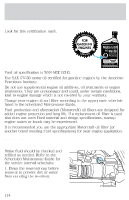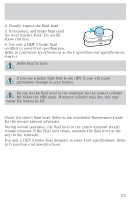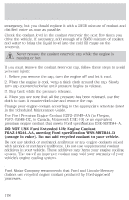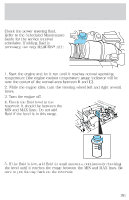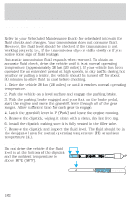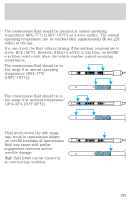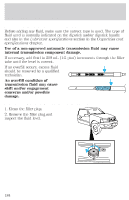1999 Ford F150 Owner Guide 1st Printing - Page 179
1999 Ford F150 Manual
Page 179 highlights
Maintenance and care Not all coolant recycling processes produce coolant which meets Ford specification ESE-M97B44-A, and use of such coolant may harm engine and cooling system components. Always dispose of used automotive fluids in a responsible manner. Follow your community's regulations and standards for recycling and disposing of automotive fluids. Coolant refill capacity To find out how much fluid your vehicle's cooling system can hold, refer to Refill capacities in the Capacities and specifications chapter. Have your dealer check the engine cooling system for leaks if you have to add more than 1.0 liter (1.0 quart) of engine coolant per month. Severe winter climate If you drive in extremely cold climates (less than -36°C [-34°F]), it may be necessary to increase the coolant concentration above 50%. Refer to the chart on the coolant container to ensure the coolant concentration in your vehicle is such that the coolant will not freeze at the temperature level in which you drive during winter months. Never increase the engine coolant concentration above 60%. Leave a 50/50 mixture of engine coolant and water in your vehicle year-round in non-extreme climates. What you should know about fail-safe cooling (if equipped) If the engine coolant supply is depleted, this feature allows the vehicle to be driven temporarily before incremental component damage is incurred. The "fail-safe" distance depends on ambient temperatures, vehicle load and terrain. How fail-safe cooling works If the engine begins to overheat: • the engine coolant temperature gauge will move to the red (hot) area. symbol will illuminate. • the • the symbol will illuminate. • the Service Engine Soon indicator light will illuminate. H C 179
